
Adhesive manufacturing company Avery Dennison (NYSE:AVY) fell short of the market’s revenue expectations in Q2 CY2025, with sales flat year on year at $2.22 billion. Its non-GAAP profit of $2.42 per share was 1.1% above analysts’ consensus estimates.
Is now the time to buy Avery Dennison? Find out by accessing our full research report, it’s free.
Avery Dennison (AVY) Q2 CY2025 Highlights:
- Revenue: $2.22 billion vs analyst estimates of $2.24 billion (flat year on year, 0.9% miss)
- Adjusted EPS: $2.42 vs analyst estimates of $2.39 (1.1% beat)
- Adjusted EBITDA: $367.5 million vs analyst estimates of $362.2 million (16.6% margin, 1.5% beat)
- Adjusted EPS guidance for Q3 CY2025 is $2.32 at the midpoint, below analyst estimates of $2.42
- Operating Margin: 12.9%, up from 11.7% in the same quarter last year
- Free Cash Flow Margin: 9.4%, up from 6.5% in the same quarter last year
- Organic Revenue fell 1% year on year (7.1% in the same quarter last year)
- Market Capitalization: $13.99 billion
“We delivered a solid second quarter, with earnings above expectations in a dynamic environment, reflecting the strength of our overall portfolio,” said Deon Stander, president and CEO.
Company Overview
Founded as Kum Kleen Products, Avery Dennison (NYSE:AVY) is a manufacturer of adhesive materials, display graphics, and packaging products, serving various industries.
Revenue Growth
A company’s long-term sales performance can indicate its overall quality. Any business can experience short-term success, but top-performing ones enjoy sustained growth for years. Unfortunately, Avery Dennison’s 5.2% annualized revenue growth over the last five years was tepid. This fell short of our benchmark for the industrials sector and is a poor baseline for our analysis.
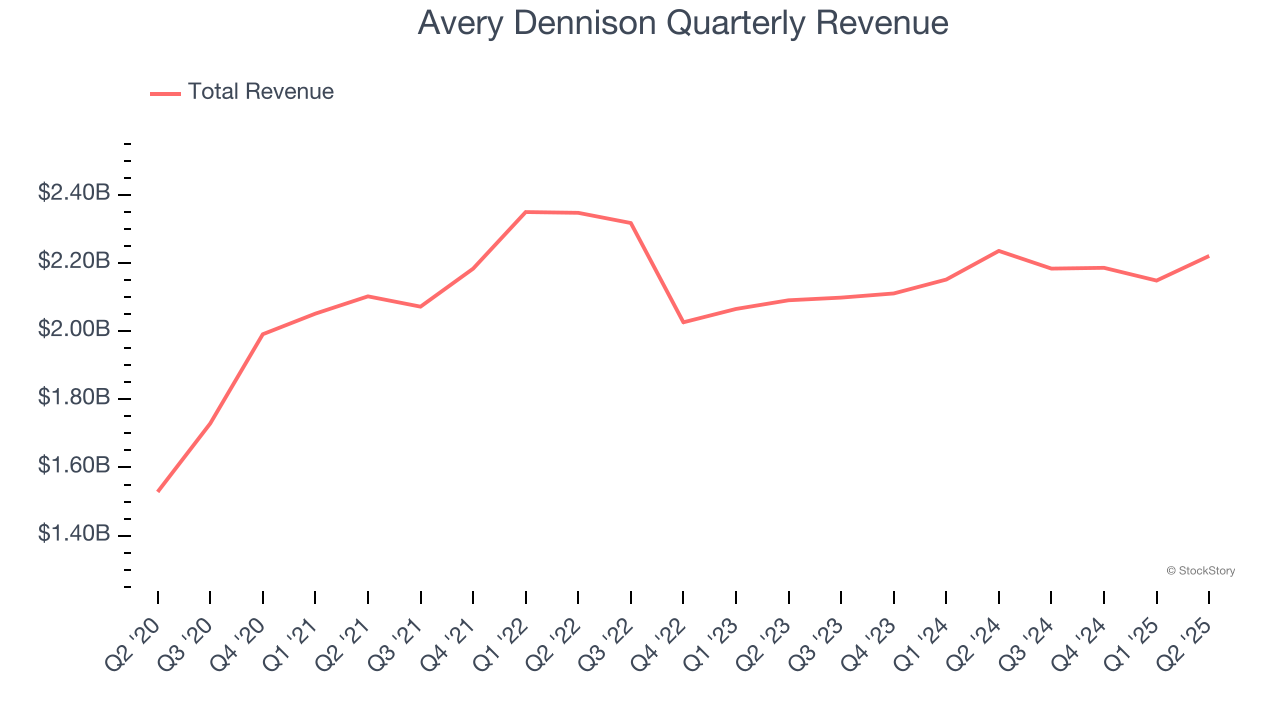
We at StockStory place the most emphasis on long-term growth, but within industrials, a half-decade historical view may miss cycles, industry trends, or a company capitalizing on catalysts such as a new contract win or a successful product line. Avery Dennison’s recent performance shows its demand has slowed as its annualized revenue growth of 1.4% over the last two years was below its five-year trend. We also note many other Industrial Packaging businesses have faced declining sales because of cyclical headwinds. While Avery Dennison grew slower than we’d like, it did do better than its peers. 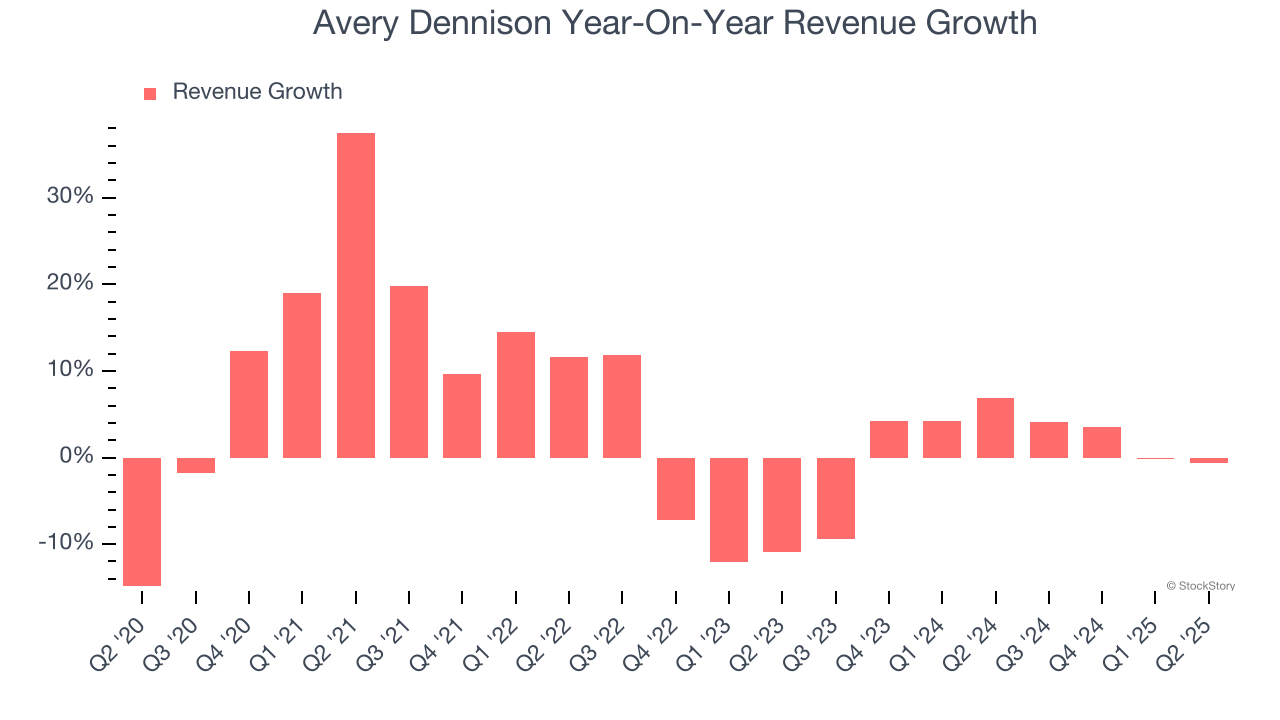
We can dig further into the company’s sales dynamics by analyzing its organic revenue, which strips out one-time events like acquisitions and currency fluctuations that don’t accurately reflect its fundamentals. Over the last two years, Avery Dennison’s organic revenue averaged 1.1% year-on-year growth. Because this number aligns with its normal revenue growth, we can see the company’s core operations (not acquisitions and divestitures) drove most of its results. 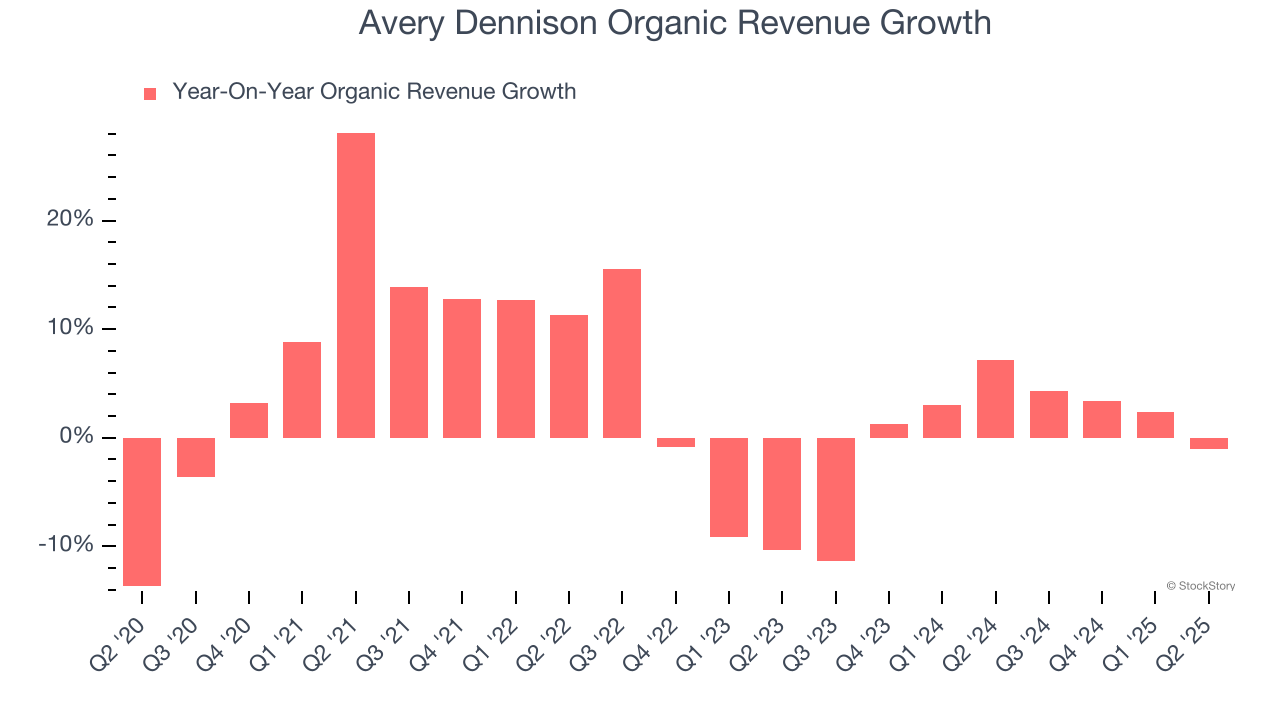
This quarter, Avery Dennison missed Wall Street’s estimates and reported a rather uninspiring 0.7% year-on-year revenue decline, generating $2.22 billion of revenue.
Looking ahead, sell-side analysts expect revenue to grow 4.3% over the next 12 months. Although this projection indicates its newer products and services will spur better top-line performance, it is still below average for the sector.
Here at StockStory, we certainly understand the potential of thematic investing. Diverse winners from Microsoft (MSFT) to Alphabet (GOOG), Coca-Cola (KO) to Monster Beverage (MNST) could all have been identified as promising growth stories with a megatrend driving the growth. So, in that spirit, we’ve identified a relatively under-the-radar profitable growth stock benefiting from the rise of AI, available to you FREE via this link.
Operating Margin
Operating margin is an important measure of profitability as it shows the portion of revenue left after accounting for all core expenses – everything from the cost of goods sold to advertising and wages. It’s also useful for comparing profitability across companies with different levels of debt and tax rates because it excludes interest and taxes.
Avery Dennison’s operating margin has been trending up over the last 12 months and averaged 11.7% over the last five years. Its solid profitability for an industrials business shows it’s an efficient company that manages its expenses effectively. This result was particularly impressive because of its low gross margin, which is mostly a factor of what it sells and takes huge shifts to move meaningfully. Companies have more control over their operating margins, and it’s a show of well-managed operations if they’re high when gross margins are low.
Analyzing the trend in its profitability, Avery Dennison’s operating margin might fluctuated slightly but has generally stayed the same over the last five years. We like to see margin expansion, but we’re still happy with Avery Dennison’s performance, especially when considering the cycle turned in the wrong direction and most peers observed plummeting revenue and margins.
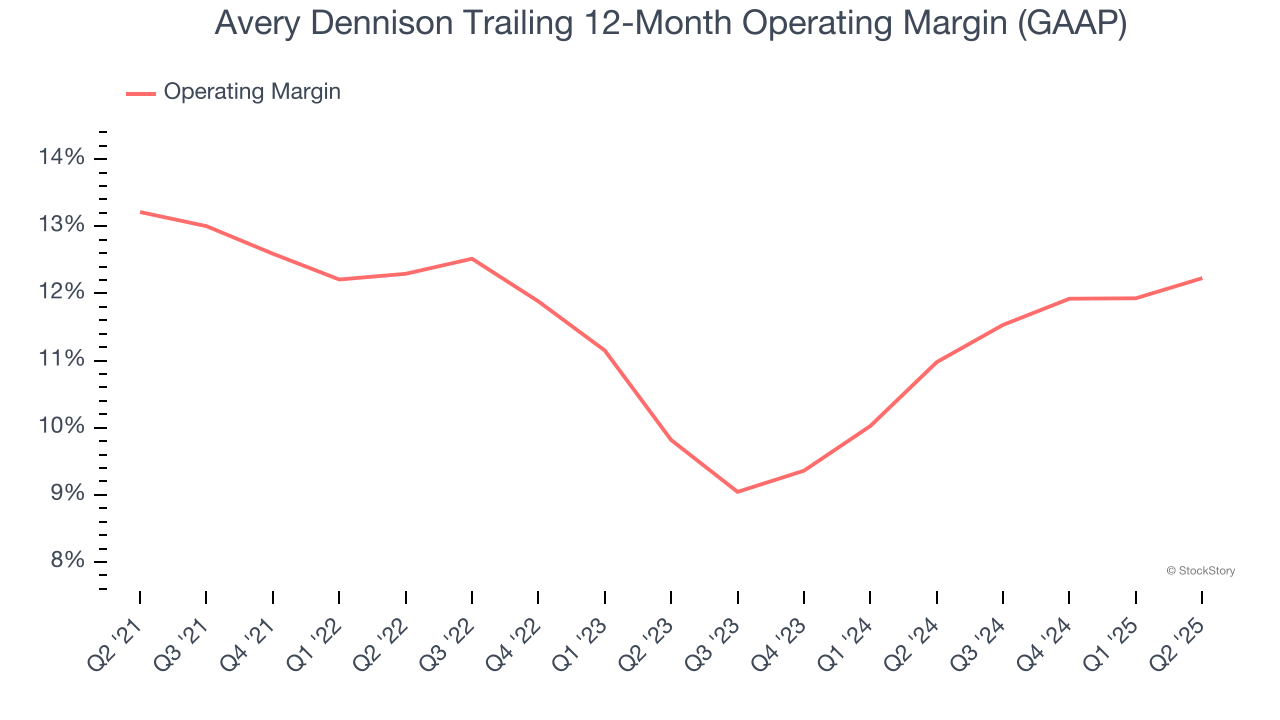
This quarter, Avery Dennison generated an operating margin profit margin of 12.9%, up 1.2 percentage points year on year. The increase was encouraging, and because its operating margin rose more than its gross margin, we can infer it was more efficient with expenses such as marketing, R&D, and administrative overhead.
Earnings Per Share
Revenue trends explain a company’s historical growth, but the long-term change in earnings per share (EPS) points to the profitability of that growth – for example, a company could inflate its sales through excessive spending on advertising and promotions.
Avery Dennison’s EPS grew at a decent 8.3% compounded annual growth rate over the last five years, higher than its 5.2% annualized revenue growth. This tells us the company became more profitable on a per-share basis as it expanded.
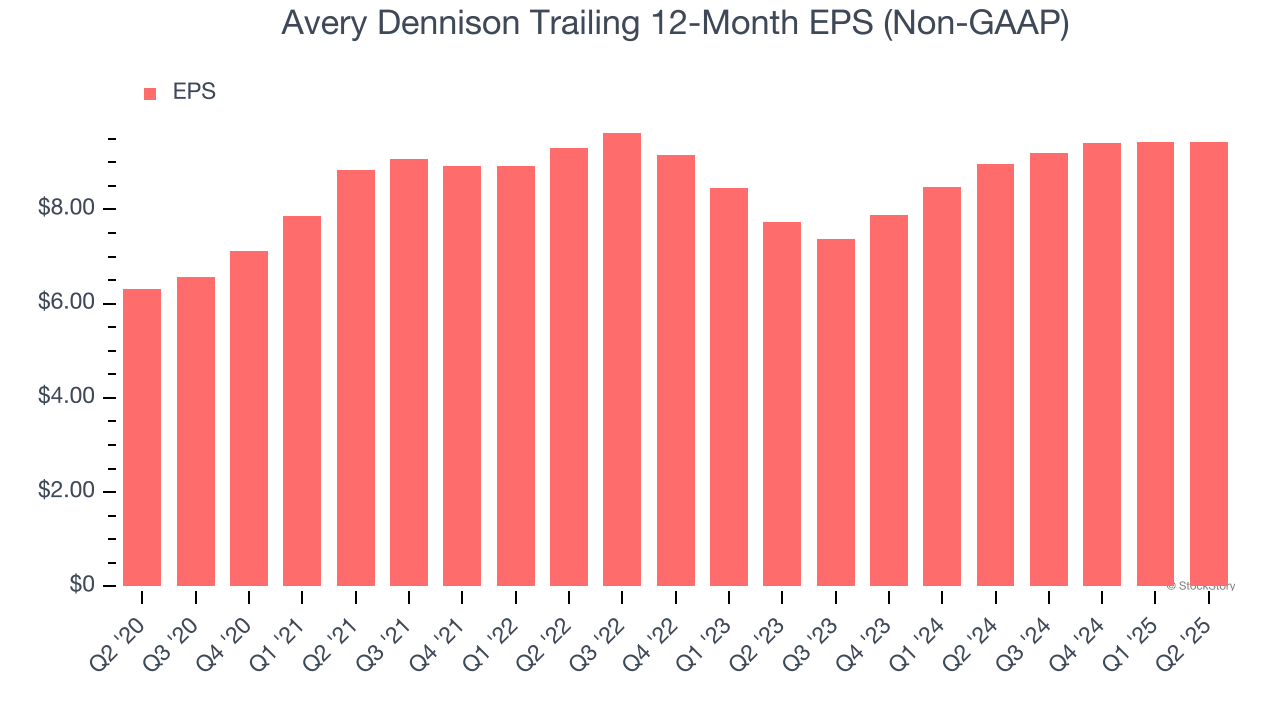
Diving into the nuances of Avery Dennison’s earnings can give us a better understanding of its performance. A five-year view shows that Avery Dennison has repurchased its stock, shrinking its share count by 6.6%. This tells us its EPS outperformed its revenue not because of increased operational efficiency but financial engineering, as buybacks boost per share earnings. 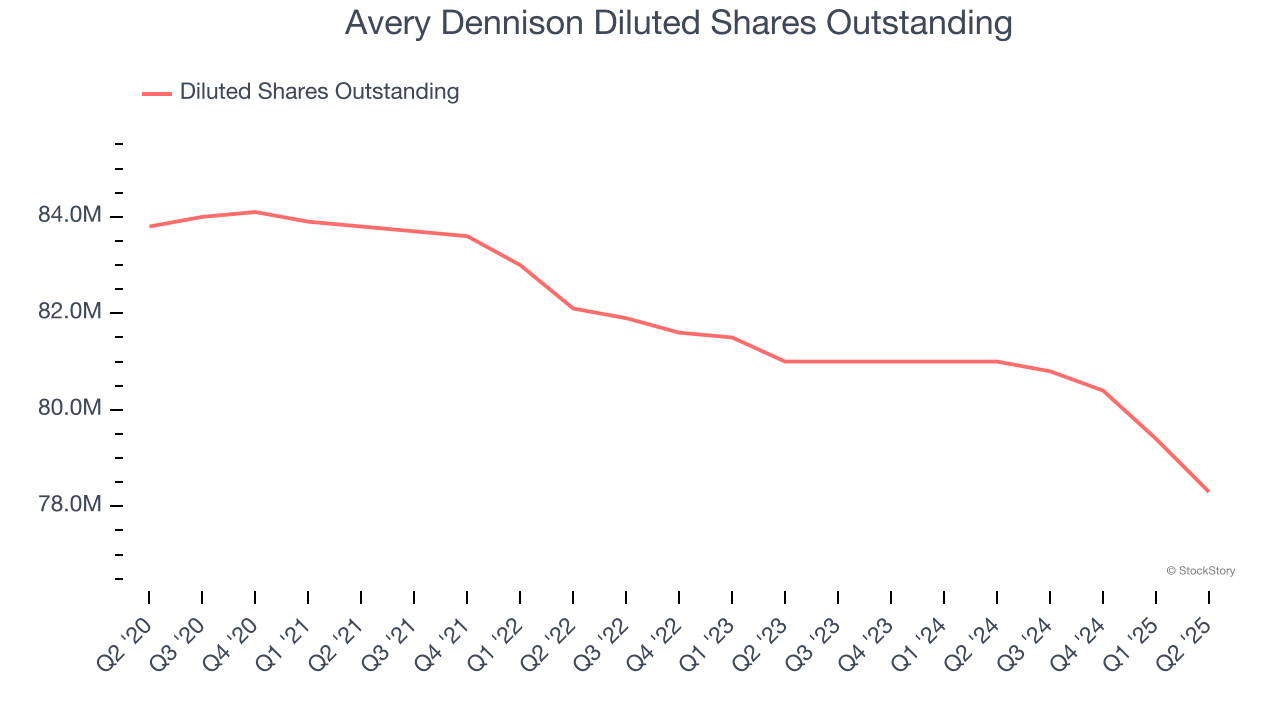
Like with revenue, we analyze EPS over a shorter period to see if we are missing a change in the business.
For Avery Dennison, its two-year annual EPS growth of 10.5% was higher than its five-year trend. This acceleration made it one of the faster-growing industrials companies in recent history.
In Q2, Avery Dennison reported EPS at $2.42, in line with the same quarter last year. This print beat analysts’ estimates by 1.1%. Over the next 12 months, Wall Street expects Avery Dennison’s full-year EPS of $9.43 to grow 9%.
Key Takeaways from Avery Dennison’s Q2 Results
It was good to see Avery Dennison narrowly top analysts’ EPS and EBITDA expectations this quarter. On the other hand, its EPS guidance for next quarter missed and its revenue fell slightly short of Wall Street’s estimates. Overall, this was a weaker quarter. The stock remained flat at $179.05 immediately after reporting.
Is Avery Dennison an attractive investment opportunity right now? We think that the latest quarter is only one piece of the longer-term business quality puzzle. Quality, when combined with valuation, can help determine if the stock is a buy. We cover that in our actionable full research report which you can read here, it’s free.
